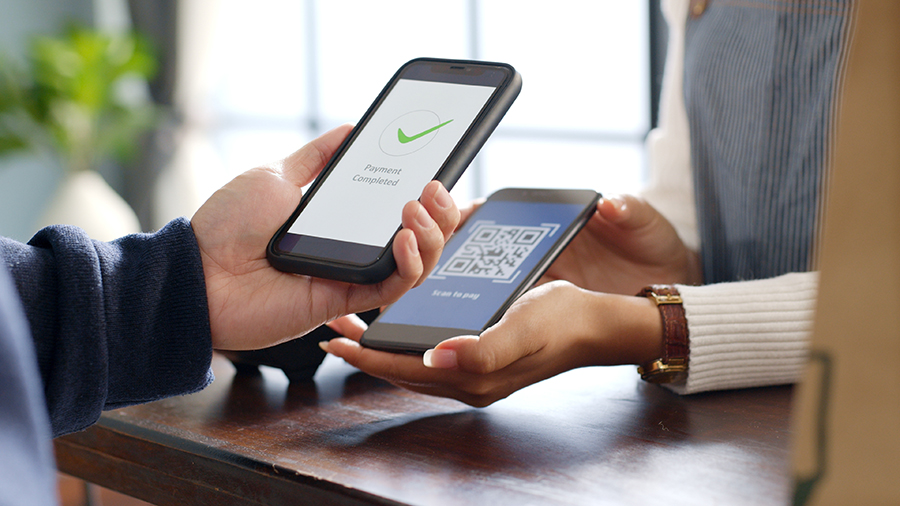
5 Reasons to Maintain Your Website
April 26, 2021
3 Trade Show Alternatives to Market Your Business
July 20, 2021Payment Marketing Trends: Discover What’s Developing in the World of Commerce
Over the years, the world of commerce has continued to evolve rapidly. As new technologies constantly emerge and customers’ demands change daily, it’s essential to know what payment marketing trends are developing. Otherwise, you and your business might get left behind as others move ahead.
However, the past year has brought many unexpected changes, especially with the COVID-19 pandemic forcing businesses to adapt to quarantining and social distancing. But, even after the pandemic ends, consumers’ expectations have been forever changed, and now their new preferences are here to stay. Read our blog to learn the latest in developing payment marketing trends, and discover how you can keep your business ahead of competitors and win the favor of customers.
QR Codes
Even before 2020, QR codes have been gaining traction in recent years. Now, the pandemic has amplified its popularity, particularly within the restaurant industry. Since the beginning of the COVID-19 pandemic, an additional 11% of U.S. consumers started using QR codes, likely because of their simplicity, ease of use, and of course, safety.
Restaurants use QR codes as replacements for physical menus to minimize contact between customers and staff. Customers can quickly review menus and pay for orders directly from their mobile phones. Not only can customers practice safe social distancing, but they have more control over their dining experience. The happier your customers are, the higher your table turnover rate is, which means generating more revenue. Because they offer convenience and safety, experts project that QR codes will become an even more popular payment marketing trend in the upcoming years.
Offering Customers Cash Discounts
While many businesses rely on credit card payment processors to offer multiple payment options for their customers, processing fees can be expensive. And as more companies are turning to contactless payment methods, these fees can pile up, forcing some enterprises into a predicament: limit options at the expense of their customers’ convenience or lose extra revenue paying processing bills.
Luckily, there is a way businesses can combat this loss, and that’s by offering their customers a cash discount program. So, what is the definition of a cash discount program? In the simplest of terms, it’s when businesses can reduce losses in revenue by putting processing fees onto customers who wish to pay with their credit cards. Customers paying with cards will see the charge added to their receipt; however, customers who opt to pay with cash will see that fee waived, thus spending less than their counterparts. It’s a payment marketing trend that incentivizes your customers while lowering your credit card payment processing fees.
Chargeback Protection
As the future still looks a little uncertain, protection is critical and vital for every business, including those considered to be “high-risk.” Now more than ever, merchants rely on payment processors, such as Square, to offer versatility while providing coverage over their accounts. However, Square’s chargeback protection doesn’t protect everyone: if anything, Square’s policy seeks to protect themselves rather than their merchants.
With Square, they’ll hold funds over transactions they consider to be “risky” or have a higher potential of chargebacks. This policy singles out high-risk merchants, such as those in the CBD or firearms industries. And while Square holds funds to limit their losses during merchant disputes, smaller merchants suffer because they can’t access their much-needed money.
So, what can we learn from this particular payment marketing trend? Regardless of your type of business, it’s essential that you find a payment processor that provides you with complete chargeback protection. If you work in a high-risk industry, look for credit card payment processors specializing in high-risk merchant accounts. Here are some things you should keep in mind when choosing a payment processor:
- Unlimited processing with limited or no hold options
- Quick approval for all merchant accounts
- Low rates
- And of course, extensive chargeback protection
Cloud Technology
One of the biggest payment marketing trends that emerged this year is the use of cloud technology. Cloud computing helps businesses move away from managing outdated and cumbersome processes tied to static systems. Also, companies can combine the value of their existing platforms with the technology of public cloud services, which providers can enable. It may not be easy at first trying to balance between existing and cloud technologies, but with patience, you can benefit from:
- More reliability
- Faster product delivery cycles
- Better economics for scalability
- Innovative customer analytics that leverages internal and external data sources
Since cloud-based technology runs on a network of remote servers, it promotes tight security and automatic systems while providing you quicker and adaptable cash flow. Also, with the cloud computing system, you can avoid problems, such as payments, which are a constant issue in the business sector. That way, your business can stay on track and not needlessly lose critical income.
As we speed through another year, it’s crucial for you to know what’s developing in the sphere of commerce. These payment marketing trends are gaining traction for a reason: they’ve proved to be successful in keeping up with the demands of consumers while improving business operations.
At SkyRocket Group, we’ll help you stay up to date and move ahead with our B2B technology marketing. Learn more about us and see how we can help your business grow today.

